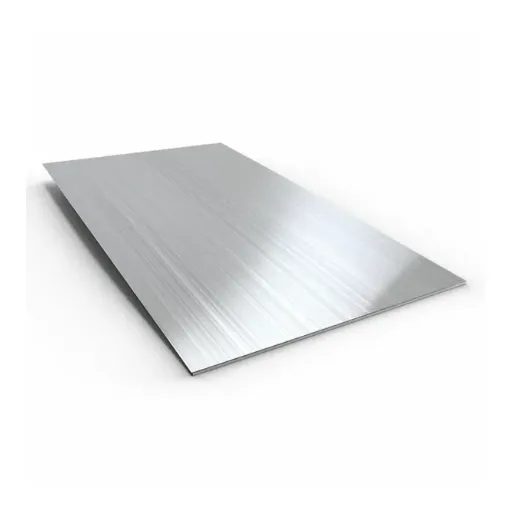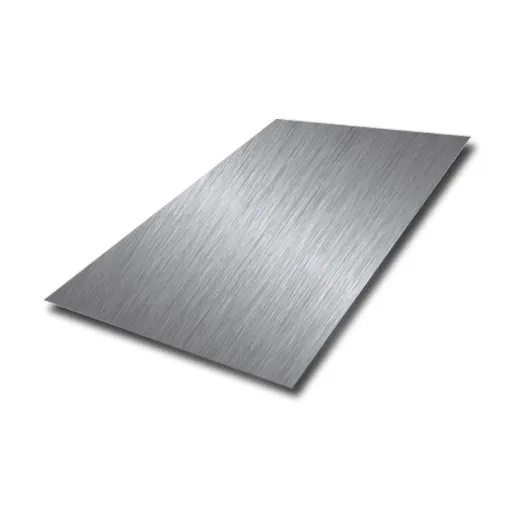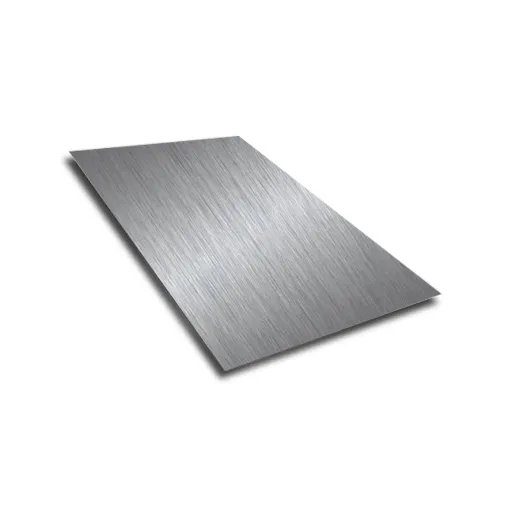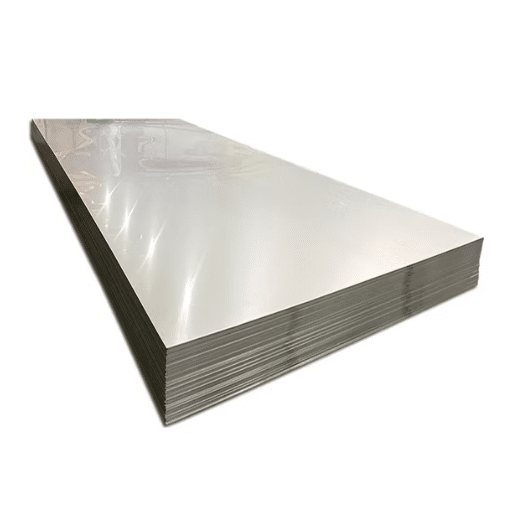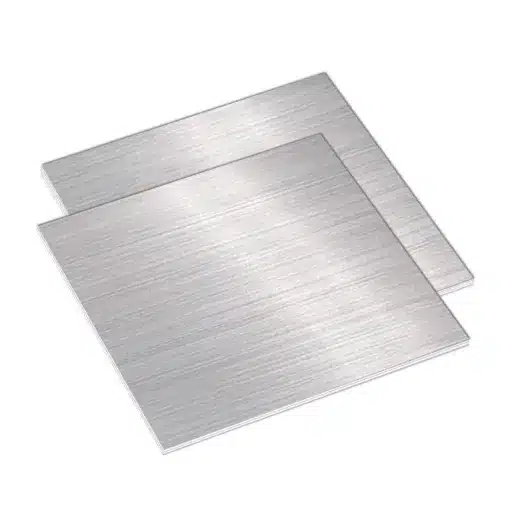The galvanized steel sheet is indispensable for many industries that include construction, automotive and appliances due to the features that it possesses, namely strength, durability, and outstanding corrosion resistance. Its ability to perform correctly in harsh conditions makes it a unique material but what exactly gives it away its strength? In this write-up, we will dive into the properties behind the unique advantages of galvanized steel, the areas of application in the industry, and the major reasons why it is preferred for numerous projects. So, get ready to discover how galvanized steel sheet has turned out to be a modern manufacturing powerhouse and a facilitator of innovations!
What is Galvanized Steel?
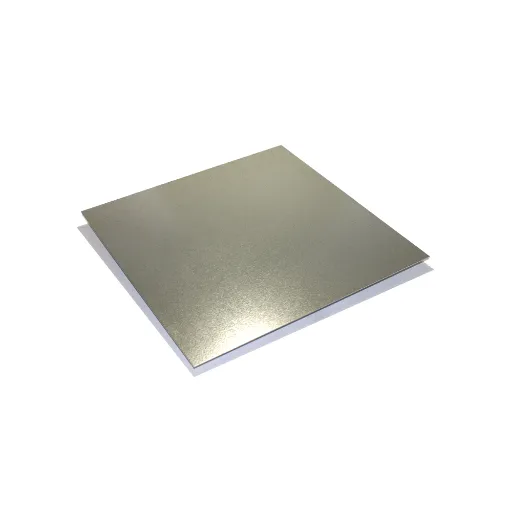
Definition of Galvanization
Galvanization is the method of adding a protective zinc layer on the surface of steel or iron to control the corrosion and rust. This can be done by either dipping the metal into molten zinc, which is the method of hot-dip galvanizing, or by employing electrochemical processes to attach the zinc layer. The zinc performs the role of a barrier, protecting the metal from the environmental elements like moisture and oxygen that are responsible for rusting.
The main advantage of galvanization is the durability of the process and long-lasting protection. The zinc coating not only gives a physical barrier but also provides cathodic protection, which means that the zinc will corrode in place of the steel if the coating is damaged or scratched. This double layer of protection guarantees that the galvanized steel keeps its resistance to corrosion over the years, even in extreme environments like coastal areas or chemical factories.
Galvanized steel is very flexible and commonly used in the construction, auto-mobiles, farming, and factory industries. Its strength against the elements makes the material perfect for outdoor installations, roof coverings, and pipe-lines. Furthermore, galvanization is a quick and inexpensive solution that does not ask for a lot of support, thus making it an effective and environmentally friendly option for a variety of large-scale projects. The strength, protection, and low cost are the reasons why galvanized steel remains the backbone of modern industry.
History and Development of Galvanized Steel
The history of galvanized steel can be traced around the 18th century when the practice of coating iron with zinc was first implemented. The method was inspired by the electrochemical reactions discovered by Luigi Galvani, although the term “galvanization” was used later on. The first commercial use of this technique was done in 1837, when French engineer Stanislas Sorel patented a process of coating iron using molten zinc, which resulted in the coating we now know as tough and protective.
Galvanized steel was, on the whole, a steel product during the 19th and 20th centuries due to its resistance to corrosion resistance and hence by its popularity. Innovations in production techniques like the hot-dip galvanizing process helped to hold the demand in high-scale production and also in cost-efficient applications. The combination of reliability and convenience made galvanized steel a preferred raw material in sectors such as construction, transportation, and infrastructure development very quickly.
This indeed makes galvanized steel to be a still crucial raw material of modern-day engineering as well as industrial projects. Its growth has been accompanying by innovations in the field such as electro-galvanizing, which even provides more accurate coatings. The historical creativity together with the continuous technological improvements has made galvanized steel one of the most adaptable and eco-friendly materials for diverse applications.
Types of Galvanized Steel Products
Galvanized steel products are designed to cater different industrial and construction requirements, thus giving sturdiness and preventing them from rusting. Here are some typical examples:
Galvanized Steel Sheets and Coils
These materials find application in the construction sector, the automotive industry, and manufacturing of home appliances. The protective layer of zinc guarantees resistance to rust and other environmental factors for a long time, thus being perfect for roofs, walls, and paneling.
Galvanized Steel Pipes
These pipes, which are coated with zinc, are commonly used in construction, plumbing, fencing and the likes due to their strength and durability. Besides they have been used extensively in the water supply systems because of their non-corrosive property and long life.
Galvanized Steel Wire
This steel wire is often included amongst the metal wires used in the industries for binding and making fences, among other things. Its ability to resist corrosion is one of the factors which make it strong enough to last through the different weather seasons.
Different industries have different requirements and hence the products are customized accordingly, thereby making galvanized steel a widely accepted and trustable choice in multiple sectors. Also, these products are the ones that showcase how advancements in galvanization have made it possible for the steel to be utilized in different sectors concurrently.
Properties of Galvanized Steel Sheets
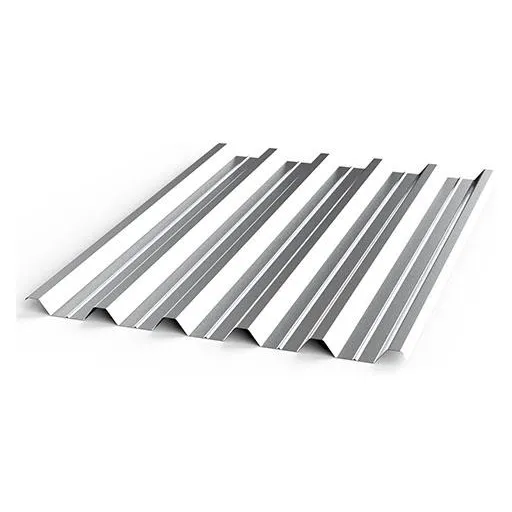
Corrosion Resistance
Galvanized steel sheets are a great choice due to their remarkable corrosion resistance. Their resistance is due to a zinc coating that is layered on the sheets. This coating helps protect the metal from the environment, like moisture, oxygen, and pollution that lead to rust and metal deterioration. The zinc layer provides not only protection to the steel surface but also offers sacrificial protection, which means the zinc continues to corrode instead of the steel, thereby keeping the base metal protected even when tiny scratches or minor damage occur on the surface.
The development of galvanization methods has also positively impacted the longevity of galvanized steel sheets. Today, among the techniques used are hot-dip galvanization and electro-galvanization, which not only apply the zinc layer thickly but also improve its efficiency by covering it evenly to resist corrosion. Research has revealed that galvanized steel is able to cope with harsh conditions, such as industrial areas with high humidity, marine regions with salt-laden air, and urban areas that experience frequent acid rain. This property makes it the most suitable material among all for building outdoors, making automotive parts, and farming equipment, where resistance to wear caused by environmental conditions is very important.
Key Finding: Latest industry reports indicate that the longevity of galvanized steel can be several decades, with a living span of 50 years or more in rural environments and 20 to 25 years in maritime or industrial areas. Its resistance to rust means that the maintenance costs are reduced and the service life is extended, making it a very economical option for infrastructure projects of large scale. What is more, the ability of galvanized steel to be recycled lessens its environmental impact and therefore, it supports sustainable building practices. Altogether, these characteristics point out the role of galvanized steel sheets in the modern engineering and manufacturing industries as vital.
Durability and Longevity
Galvanized steel is a material that has great durability and is able to endure even very harsh conditions and prolonged chemical or other corrosion. The galvanization involves covering the steel with zinc, which is the main protective agent against moisture, oxidation, and other corrosive chemicals. Thus, both uncoated and coated steel have life spans of the same order, but the coated one is chosen to bear the brunt of the weather for its durability traits being of long duration and low attrition rate. Some of the places where such projects are going on are bridges, roofing, and industrial machinery, Galvanized steel is all about its quality.
The wearing down of the steel and losing the capacity of doing the mechanical trial in a really tough environment is one of the main factors that contribute to its long life. For example, in the case of industrial or marine environments where saltwater or chemical agents are active, the life of the galvanized steel can be prolonged for decades as a result of going down and being able to pass through trials. Research has shown that the lifespan of zinc-coated steel is 50 years in rural settings and 25 years in urban or coastal areas, depending on how much exposure there is. On the other hand, this is a great level of strength that necessitates very few or no repairs or replacements throughout the project cycle in case of large-scale applications.
Moreover, technology advancements have been instrumental in boosting galvanized steel’s performance for modern uses. The most notable example involves the use of hot-dip galvanization process where the zinc coating is uniformly distributed across the whole surface. So, in addition to having a thicker layer of zinc, there is also better corrosion resistance and this is an added strength factor. The innovations do not stop there as they are furthering the development of the steel that is able to survive super high temperatures, moistures, and mechanical stresses. By marrying the majestic qualities of the traditional steel with the modern ones, galvanized steel continues to be a pivotal material in the sustainable construction and creative engineering designs.
Weight and Thickness Variations
The weight and thickness of galvanized steel are determining factors for its various applications. Different types of galvanized steel are made in different gauges, which are determined by the thickness of the steel sheet before and after galvanization. The thinner ones are mostly used in light constructions, like roofs, panels, and car parts, where the aim is to reduce weight but still keep strong. On the contrary, the thicker ones are for making stronger and longer-lasting constructions like bridges, industrial buildings, and heavy machines.
One factor that has a strong influence on the weight and performance of galvanized steel is the thickness of the zinc coating. The coating is often specified in microns or ounces per square foot and the corrosion resistance of the material is directly related to the thickness of the coating. For example, thicker zinc coating gives longer time protection in very corrosive areas, such as marine or industrial zones.
New manufacturing technologies have paved the way for precise control of weight and thickness of galvanized steel in production. The new methods, such as automated batch processing and continuous galvanizing lines, have improved coating uniformity and drastically cut down waste. All these innovations give engineers and designers a greater range of options in choosing the galvanized steel for their specific projects. By having a good grasp of the connection between weight, thickness, and performance, the industries keep on opening up more avenues for the use of galvanized steel while taking care of its long-term reliability and structural integrity.
Manufacturing Process of Galvanized Steel Sheets
Overview of the Galvanization Process
Galvanization is a method that is properly and controllably done. Its main aim is to make steel stronger and more resistant to corrosion by covering it with a layer of zinc that is about a few microns thick. The process basically includes three main steps: surface cleaning, galvanizing, and post-treatment. During the first step, i.e., surface cleaning, the steel is cleansed of any impurities (e.g. dirt and grease) and oxidized layers in order to allow the zinc layer to adhere nicely to the steel. To prepare the steel, various methods are used such as cleaning with caustic solutions, pickling in acid baths, and fluxing.
Through the galvanizing step, the cleaned steel is fully immersed in a vat of molten zinc that is heated to around 840°F (450°C). As the zinc reacts with the steel, a metallurgical bond that consists of several layers of zinc-iron alloy and a layer of pure zinc is formed. The moisture, chemicals, and airborne contaminants that can cause rust and corrosion are kept from the steel by the layers that act as a shield.
The zinc-coated steel undergoes treatment that includes quenching and passivation to be certain that the steel retains its shine and does not get white rust during storage or transport. The modern galvanizing process has benefited from the wide use of advanced technologies, such as real-time monitoring systems and bath chemistry innovations, which have improved efficiency and precision. Statistical data reveals that hot-dip galvanizing offers an excellent corrosion protection of more than 50 years under normal atmospheric conditions, thus making it a practical and eco-friendly option for diverse industries.
The combination of new technologies and rigorous quality controls has made the galvanization process satisfy the growing requirement for durable, high-quality steel products.
Different Methods of Galvanization
There are different ways of galvanization which will depend on the application needed, the cost, and the conditions that the final product will have to survive. Among the most common ones those are the following:
| Method | Description |
|---|---|
| Hot-Dip Galvanization Method | This method is used very widely and it is the immersion of steel in molten zinc. A process that creates a really strong three-way metallurgical bond of zinc with steel is in fact the reason for the fantastic property of steel and zinc combination – corrosion resistance – to last for up to fifty years outdoors in general! Thus hot-dip galvanized steel is said to have a lifespan of fifty years in typical outdoor environments, which leads to significant reduction in maintenance and replacement costs. |
| Electro-Galvanization Method | In electro-galvanization, the electric current first takes zinc and then puts it onto the steel surface. This process results in a zinc layer thinner than hot-dip galvanizing, which means that it is particularly for applications where finish and precision need to be perfect. In spite of that, the process is less durable against corrosion especially in harsh environments, however, it is still widely used for automotive parts and consumer goods because of the less expensive cost involved. |
| Pre-Galvanization Method | Pre-galvanization takes place at the production stage where steel sheets or strips go through a molten zinc bath and then get coiled. This method is suitable for big-volume production and is also fast, but the process still requires additional finishing procedures for the cut edges so as to ensure complete protection. |
| Thermal Spray Galvanization Method | Otherwise known as zinc spraying, this technique comprises of the spraying of molten zinc on the steel surface. An application of especially thick coating on the complicated surfaces or on the structures post-fabrication is done by this method. Coating thickness flexibility is provided by thermal spray which can then be adjusted to the various protective requirements. |
| Mechanical Plating | This procedure necessitates mechanical energy and by using glass or ceramic beads, zinc powder is applied to the surface of steel, and thus, a coating that is durable is made. Mechanical plating is highly accurate and efficient and therefore it is a preferred option for small components such as bolts and nuts. |
All these techniques possess their unique pros and cons, and the right one is to be chosen considering the environment, the production scale, and the performance specifications while guaranteeing the best results for applications in the industry and structures.
Quality Control and Testing
The maintenance of coating integrity and longevity implies that very strict and demanding quality control along with testing measures are put in place. The steps taken confirm the coatings’ ability to meet the requirements in terms of performance, conformity to the specification, and resistance to environmental as well as mechanical stress. Adhesion tests are among the most common tests done, where the adhesion of the coating to the substrate is measured and thickness tests that confirm uniform application are done. Coatings that switch to the outdoors and come in contact with harsh environmental conditions are sometimes made with the help of corrosion resistance tests done for them. These tests are like a check-up for the whole production process, making sure the quality is always the same, and also pointing out where the weaknesses may be located.
The modern testing approaches now use various advanced technologies like atomic force microscopy (AFM) and Raman spectroscopy for coating analysis and for the study of the structural properties the observations are made by the use of scanning electron microscopy (SEM) and energy-dispersive X-ray spectroscopy (EDX). These instruments make it possible for the manufacturers to spot minute defects or deviations that would otherwise be undetected. When coupled with the automated testing systems, these innovations not only improve the testing speed but also lessen the occurrence of errors made by humans and supply the detailed data that might encourage changes in the coating operation.
On top of that, the implementation of digital monitoring combined with advanced reporting systems is gradually becoming more significant in the quality control portion of the production process. Continuous documentation of production conditions and test results is one way the manufacturers can ensure not only traceability and compliance with the industry standards through records but also through the use of these systems that help determine maintenance requirements and prevent issues from coming up, thus saving time and resources in the long run. The rigorous testing along with the advanced technology and meticulous documentation is what ultimately leads to the delivery of high-quality and reliable industrial and structural coatings.
Applications of Galvanized Steel Sheets
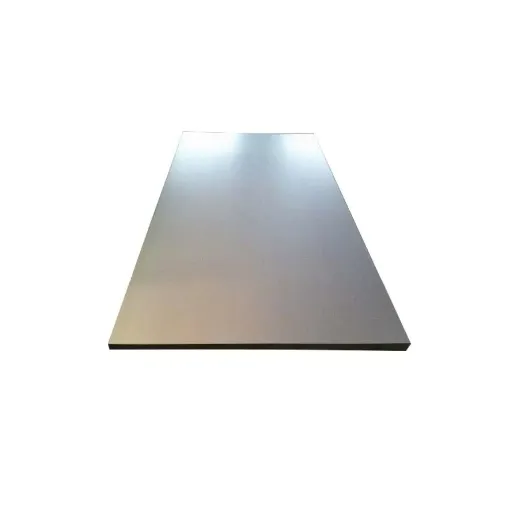
Construction and Building Materials
Galvanized steel sheets are the backbone of the construction and building materials industry owing to their durability, resistance to corrosion and the wide range of uses they have. Such sheets are universally used to secure the structural framework and at the same time provide superb performance that lasts through different applications. Here are five major uses of galvanized steel sheets in construction listed below:
1
Roofing and Cladding
Galvanized steel sheets are most often the material of choice for roofing and external cladding because they can easily resist the worst of the weather. Their rust-proofing character makes them ideal for being in contact with water and solar rays for long periods of time.
2
Structural Framework
Greatly improved by the use of galvanized steel sheets, structural beams and frameworks become stronger and free from corrosion thus creating ever-lasting and stable construction projects.
3
Fencing and Barriers
Galvanized steel sheets are popular for the making of fences, gates and barriers not only because they are cost-efficient but also because they are very strong and hence can be installed in both residential and commercial areas.
4
HVAC Ductwork
These sheets come up as the best option for making ducts for HVAC systems because they provide great thermal conductivity, are rust-resistant and are easy to install.
5
Bridges and Walkways
The use of galvanized steel sheets in the making of pedestrian walkways, bridges and other infrastructures is due to their capability to bear high loads while withstanding extreme environmental factors.
The above mentioned applications are an evidence of the versatility and significance of galvanized steel sheets in the making of robust and effective structures.
Automotive Industry Uses
The automotive industry heavily relies on galvanized steel sheets because of their excellent durability and corrosion resistance. Below are the five main applications of galvanized steel sheets in the automotive industry:
1
Body panels
Galvanized steel sheets are frequently employed in the production of car body panels, which include doors, hoods, and fenders. Their resistance to rust contributes to the durability of automobiles, particularly in areas where harsh weather and poor road conditions are common.
2
Chassis components
The chassis, being the structural backbone of a vehicle, depends on the strength and durability of galvanized steel sheets to provide strong support and to withstand mechanical stresses.
3
Underbody protection
Galvanized steel sheets are used to create parts like the undercarriage and exhaust systems that will not rust even though they are constantly exposed to moisture, mud, and road salts.
4
Fuel tanks
Galvanized steel sheets ensure excellent corrosion resistance, thus becoming the reliable material for producing long-lasting fuel tanks.
5
Reinforcement parts
Galvanized steel sheets are used for the structural reinforcements inside vehicles, such as beams and braces, to improve safety and guarantee rigidity throughout the life of the vehicle.
All these applications underscore the importance of galvanized steel sheets in the automotive industry in terms of durability, safety, and overall efficiency.
Manufacturing and Industrial Uses
Galvanized steel sheets are important materials for many manufacturing and industrial applications because of their long life, resistance to corrosion, and cost-effectiveness. Here are the top five uses:
1
Construction Materials
Galvanized steel sheets are among the most popular materials in the construction industry for roofing, wall panels and structural frameworks. Their naturally corrosion-resistant properties have a big impact on reducing maintenance costs and ultimately increasing the life of buildings, particularly in very challenging environments.
2
HVAC Systems
Heating, ventilation and air-conditioning (HVAC) systems make use of galvanized steel for ductwork and fittings. The material has a long life, and the zinc coating on it prevents rust, thus ensuring the quality and safety of air in both residential and commercial areas.
3
Agricultural Equipment
Galvanized steel is the main material for the farm supplies and equipment that includes fencing, silos, and water storage tanks. The agricultural sector enjoys the environmental resistance feature of the metal, hence it lasts longer in the outdoors.
4
Electric Appliances
Appliances meant for home and industrial use, such as refrigerators, washing machines, and microwaves, are assembled with parts made of galvanized steel. The product receives the benefit of rust-proofing and the product being reliable, plus having reduced maintenance needs over time.
5
Shipping Containers
Galvanized steel sheets are widely used in the making of shipping containers. The material provides structural strength as well as very high corrosion resistance, which is necessary for transporting the goods over different climatic conditions without compromising on safety or quality.
The above-mentioned applications indicate the versatility of galvanized steel sheets and their widespread use in different areas, thus making them one of the most trusted materials in the manufacturing and industrial domain.
Case Studies: Successful Applications of Galvanized Steel Sheets
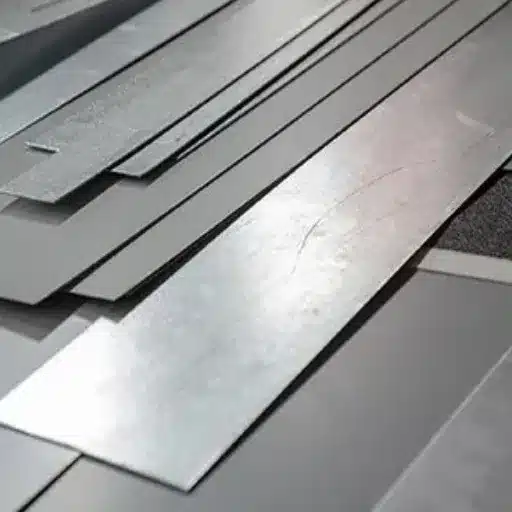
Construction Projects Using Galvanized Steel
In my experience, the galvanized sheets have always been at the forefront of construction projects mainly due to their long-lasting nature and ability to withstand harsh weather. For example, in turning to largescale building frameworks, galvanized steel takes the full weight and encase of the roof with rain, humidity, and harsh temperatures over prolonged periods and still shows impeccable compliance. Such properties make it the material of choice for architects and engineers who want their designs to last.
One of the other major applications I have come across is the construction of roads and bridges. As the popularity of galvanized steel in these waterworks gradually rises, so does the corrosion that it prevents. Infrastructure durability over time is not just assured, but also an extension of the steel’s life cycle is made possible by less frequent maintenance and safer installation disposal as the steel remains reliable doing great long-term exposure to moisture and pollutants. In building such communities, the reliance indicators of this material in public infrastructure projects highlight its immense value in the sustainability and dependability of such projects.
Finally, I have come across galvanized steel used in the manufacture of roofing materials majorly in urban residential and industrial buildings. Rusting of galvanized steel sheets combined with their easy installation facilities have made them the darlings of both the property owners and the contractors. Moreover, the reflective nature of the sheets contributes to the reduction in heat absorption thus resulting in energy conservation.
Innovative Uses in the Automotive Sector
Today, it is hard to imagine the automotive sector without galvanized steel. The metals’ superior qualities of durability and resistance to corrosion have been the main contributors to the longer lives of cars. The zinc layer of the galvanized steel prevents the decay of car parts affected by the weather including bodywork, from rusting. Hence it keeps the integrity of the vehicles through the years and lessens the need for repairs and maintenance that would cost much due to the damage caused by corrosion.
One of the major benefits in the use of galvanized steel in the manufacturing of cars is that it has contributed to vehicles being made with both the features of lightness and high safety. Car manufacturers are making use of the so-called “high-strength” galvanized steel to come up with components that have less weight but offer more or less the same sturdy performance. This innovation is very important since the industry is transitioning towards the production of more fuel-efficient and less polluting cars. By cutting down the total weight of the vehicle without sacrificing safety, the use of galvanized steel results in the car consuming less fuel and hence emitting less carbon dioxide which is in line with the world’s sustainability targets.
In addition, the galvanized steel is seen as one of the key materials in the battery-powered and hybrid vehicles’ production. The latter vehicles require the installation of heavy-duty safety and performance-standard-compliant compartments and designs. The addition of galvanized steel that is both durable and versatile to the manufacturing process means that the producer is planting a reliable solution to the issue of protecting delicate electrical components from corrosion. This approach not only lasts the life of the modern-day technologies in the automobile arena but also cuts down the production costs, thus making environmentally friendly transportation accessible to consumers who are not well off. All in all, innovations that have been made with the help of galvanized steel portray its standing as the dominant actor in the future of the automobile industry.
References
- Resistance spot welding of galvanized steel sheet
This study explores the challenges and techniques involved in welding galvanized steel sheets, providing valuable technical insights. - Cinematography of resistance spot welding of galvanized steel sheet
This paper examines the welding process of hot-dipped galvanized steel sheets, focusing on the technical parameters and outcomes. - Friction effects on the formability of electrogalvanized and hot-dipped automotive sheet steel
This research investigates the formability of galvanized steel sheets in automotive applications, comparing electrogalvanized and hot-dipped coatings. - Click here to read more.
Frequently Asked Questions (FAQ)
Q: What is a galvanized steel sheet?
A: A galvanized steel sheet is a sheet metal product made from steel and then coated with a very thin layer of zinc in order to prevent the steel from getting corroded and rusty. The galvanized steel sheet process consists of coating the steel with zinc that will last longer and make the steel suitable for many outdoor uses since it is less likely to rust.
Q: What are the benefits of using galvanized steel sheets?
A: The characteristics of galvanized steel sheets are so varied that the main benefit is the very low corrosion resistance and durability. The application of the zinc layer stops the rusting process, thus the metal remains usable in construction and car manufacturing where strong and everlasting materials are needed.
Q: Can galvanized steel sheets be used for outdoor applications?
A: In fact, galvanized steel sheets are among the best possible choices for outdoor applications, since they can resist corrosion so effectively. The zinc layer does the work of a defense and prevents the steel from being damaged by the environmental factors, hence it is great for roofing, fencing, and other construction works.
Q: What is the process of galvanization?
A: Galvanization is a process where firstly, the steel surface is cleaned to get rid of any foreign substances and then either the steel is dipped into molten zinc or, electroplating is used to apply a zinc coating. The result is a zinc layer consisting of zinc and iron that is scratch and rust resistant for the long term, thereby performing well under various environmental conditions.
Q: Are there different types of galvanized steel sheets available?
A: The answer is affirmative that you can find lots of different kinds of galvanized steel sheets like hot-dipped sheets and electro-galvanized sheets. Hot-dipped galvanized sheets have a thicker zinc layer which makes them more resistant to corrosion than electro-galvanized sheets which have a thinner coating that is more appropriate for aesthetic applications.
Q: What are the common applications of galvanized steel sheets?
A: Galvanized steel sheets find their way into the construction industry for the purpose of building transparent structures, roofs, and walls. Also, they come in the automobile industry for parts that need to be strong and resistant to rust. Apart from that, they can also be part of the decorations where aesthetic appeal is sought.
Q: How can I cut galvanized steel sheets without damaging the coating?
A: The right way to cut the galvanized steel sheets while preserving the protective zinc layer is to use metal cutting tools like shears or plasma cutters. Moreover, avoid using tools that could chip or scratch the coating as this would expose the steel to the possibility of corrosion which might happen in time.
Q: What is the minimum thickness for a galvanized steel sheet for structural applications?
A: The minimum thickness for the structural application of galvanized steel sheet is mainly determined by the project’s individual requirements. However, the typical recommendation is that 18 gauge or above should be used to provide a strong and durable support in terms of steel structure.
Q: How do I ensure the quality of galvanized steel sheets?
A: To make sure that the quality of the galvanized steel sheets is up to the standard, you should check the product’s adherence to the respective industry standards and specification. Try to get the manufacturers’ certificates of quality and select the products that have been tested most stringently for corrosion resistance and durability so that they will be the ones with the least chance of not meeting your project’s requirements.

